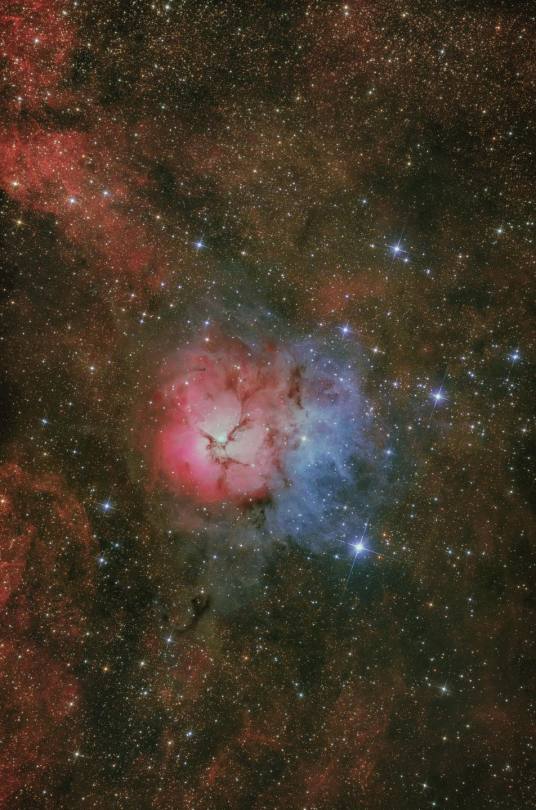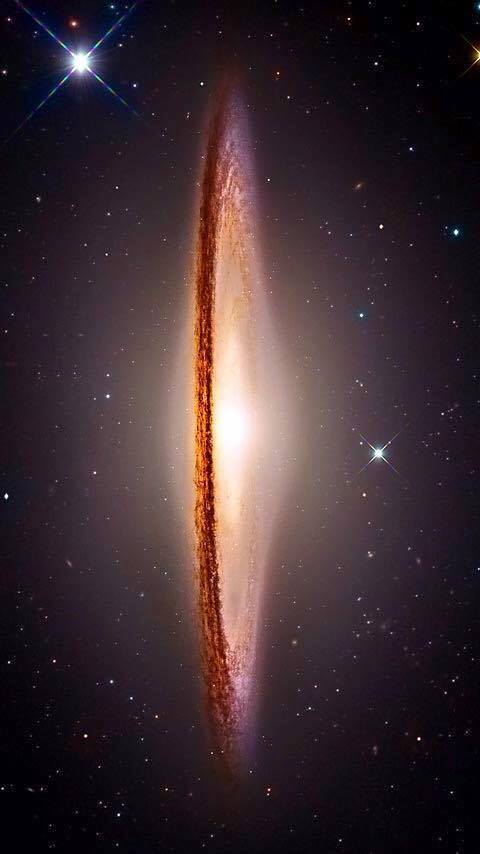Cutaway Diagram Of The Apollo Spacecraft, S-IVB, S-II, S-IC, J-2 And F-1 Engine Of The Saturn V.









Cutaway diagram of the Apollo spacecraft, S-IVB, S-II, S-IC, J-2 and F-1 engine of the Saturn V.
Date: 1967
NASA ID: 0100985, 0101138, 0101139, 0101140, 0100983, 9801810, 9801770, 0100981, 9801771
More Posts from Dukeofwatts and Others








We are truly children of the stars. —Brian Cox
l all taken by David Moulton

Cepheus. Cosmic Zoo

M104, Sombrero Galaxy

Before you ask, yes, we see that face-shaped cloud made of dust and gas (with stars for eyes) on the right side of this image as well.
But the Tarantula Nebula is a far wilder place than weird red blobs. It is a large star-forming region of ionized hydrogen gas that lies 161,000 light-years from Earth in the Large Magellanic Cloud. Its turbulent clouds of gas and dust can be seen swirling between the region’s luminous, newly formed stars.
Also known as 30 Doradus, it is the brightest star-forming region in our galactic neighborhood and home to the hottest, most massive stars known. This makes it an excellent natural laboratory to test theories of star formation and evolution.
Credit: ESA/Hubble & NASA, C. Murray, E. Sabbi; Y.-H. Chu.

Gamma Cas & Ghost Nebula © Antoine Grelin

IC 1295

ESO 593-8, Stardust Angel

Solar System map that charts the key milestones of space exploration.
by reddit/u/Ray_smit

NGC1566 450 Mega Pixels

The Cosmic Bat Nebula ©
-
 winsomereflectiveaesthete liked this · 9 months ago
winsomereflectiveaesthete liked this · 9 months ago -
 cappybecappin liked this · 9 months ago
cappybecappin liked this · 9 months ago -
 komis liked this · 10 months ago
komis liked this · 10 months ago -
 ottovonklott liked this · 10 months ago
ottovonklott liked this · 10 months ago -
 imrryr liked this · 11 months ago
imrryr liked this · 11 months ago -
 suntsuntusuntusuntumsuntumsuntum liked this · 11 months ago
suntsuntusuntusuntumsuntumsuntum liked this · 11 months ago -
 tumblereux reblogged this · 1 year ago
tumblereux reblogged this · 1 year ago -
 tumblereux liked this · 1 year ago
tumblereux liked this · 1 year ago -
 greenfieldsposts liked this · 1 year ago
greenfieldsposts liked this · 1 year ago -
 widepixels liked this · 1 year ago
widepixels liked this · 1 year ago -
 eszemel liked this · 1 year ago
eszemel liked this · 1 year ago -
 kellymadigan reblogged this · 1 year ago
kellymadigan reblogged this · 1 year ago -
 imperialinquisition reblogged this · 1 year ago
imperialinquisition reblogged this · 1 year ago -
 gigeconomist reblogged this · 1 year ago
gigeconomist reblogged this · 1 year ago -
 rodica9001 liked this · 1 year ago
rodica9001 liked this · 1 year ago -
 pabloatayro liked this · 1 year ago
pabloatayro liked this · 1 year ago -
 rammstein-ron liked this · 1 year ago
rammstein-ron liked this · 1 year ago -
 rammstein-ron reblogged this · 1 year ago
rammstein-ron reblogged this · 1 year ago -
 daretum liked this · 1 year ago
daretum liked this · 1 year ago -
 smileyjs liked this · 1 year ago
smileyjs liked this · 1 year ago -
 cardie01 liked this · 1 year ago
cardie01 liked this · 1 year ago -
 gonxalomx liked this · 1 year ago
gonxalomx liked this · 1 year ago -
 curtdenham71 liked this · 1 year ago
curtdenham71 liked this · 1 year ago -
 everyonelovesafatass liked this · 1 year ago
everyonelovesafatass liked this · 1 year ago -
 rocket450honda liked this · 1 year ago
rocket450honda liked this · 1 year ago -
 juanmubou liked this · 1 year ago
juanmubou liked this · 1 year ago -
 adultish96 liked this · 1 year ago
adultish96 liked this · 1 year ago -
 ekollix liked this · 1 year ago
ekollix liked this · 1 year ago -
 pfunkadeluc liked this · 1 year ago
pfunkadeluc liked this · 1 year ago -
 businessoutsider reblogged this · 1 year ago
businessoutsider reblogged this · 1 year ago -
 solarstormstuff liked this · 1 year ago
solarstormstuff liked this · 1 year ago -
 victor-ribeiro-stuff reblogged this · 1 year ago
victor-ribeiro-stuff reblogged this · 1 year ago -
 victor-ribeiro-stuff liked this · 1 year ago
victor-ribeiro-stuff liked this · 1 year ago -
 rlfsoso liked this · 1 year ago
rlfsoso liked this · 1 year ago -
 hefosupa liked this · 1 year ago
hefosupa liked this · 1 year ago -
 localqueries reblogged this · 1 year ago
localqueries reblogged this · 1 year ago -
 dukeofwatts reblogged this · 1 year ago
dukeofwatts reblogged this · 1 year ago -
 martinmartinfan liked this · 1 year ago
martinmartinfan liked this · 1 year ago -
 bigbbar68 liked this · 1 year ago
bigbbar68 liked this · 1 year ago -
 severulus liked this · 1 year ago
severulus liked this · 1 year ago -
 urrepules reblogged this · 1 year ago
urrepules reblogged this · 1 year ago -
 kgyst liked this · 1 year ago
kgyst liked this · 1 year ago -
 imperialinquisition liked this · 1 year ago
imperialinquisition liked this · 1 year ago